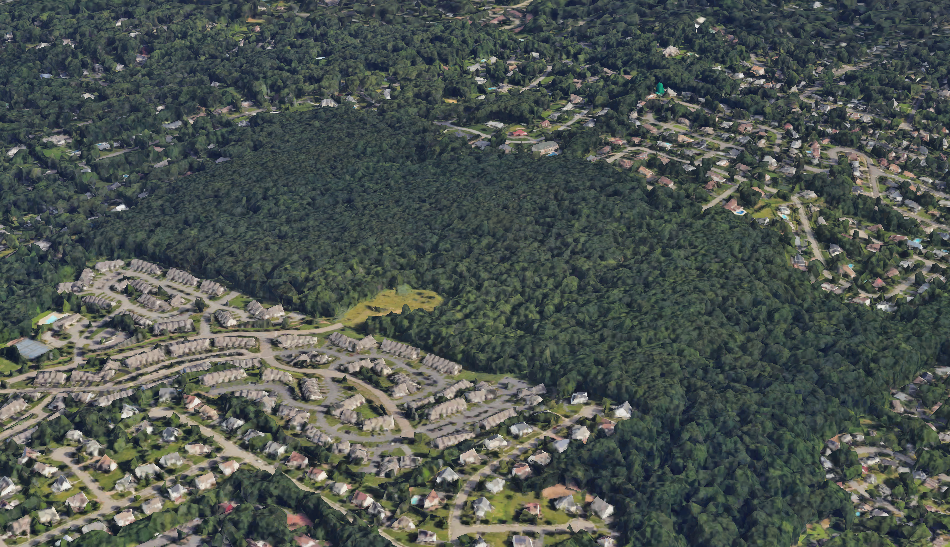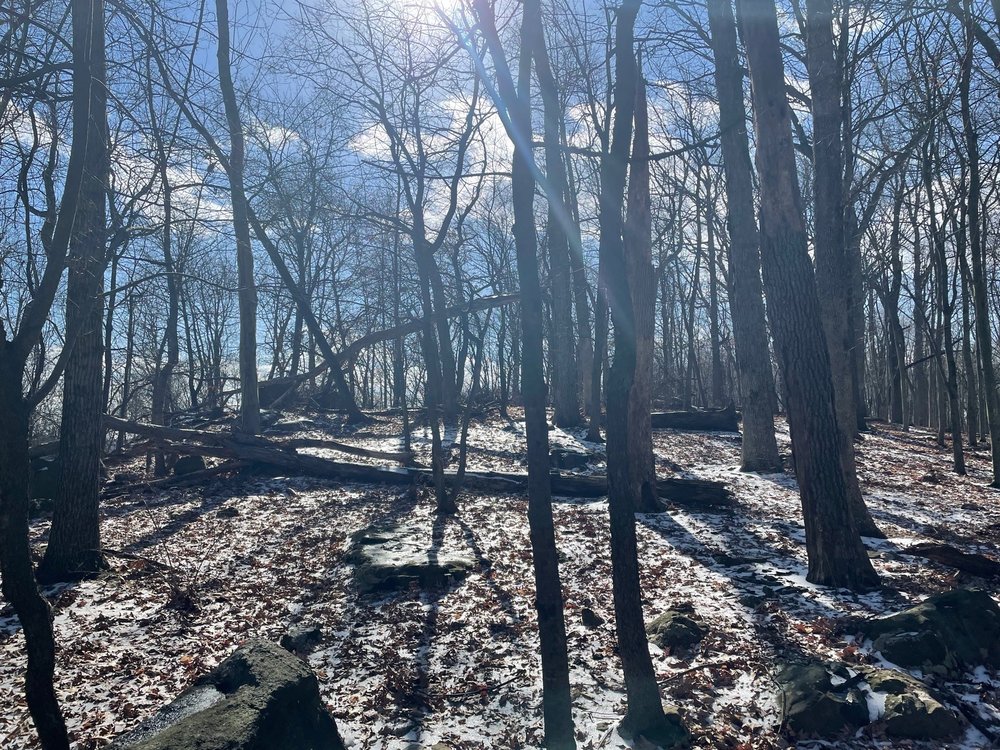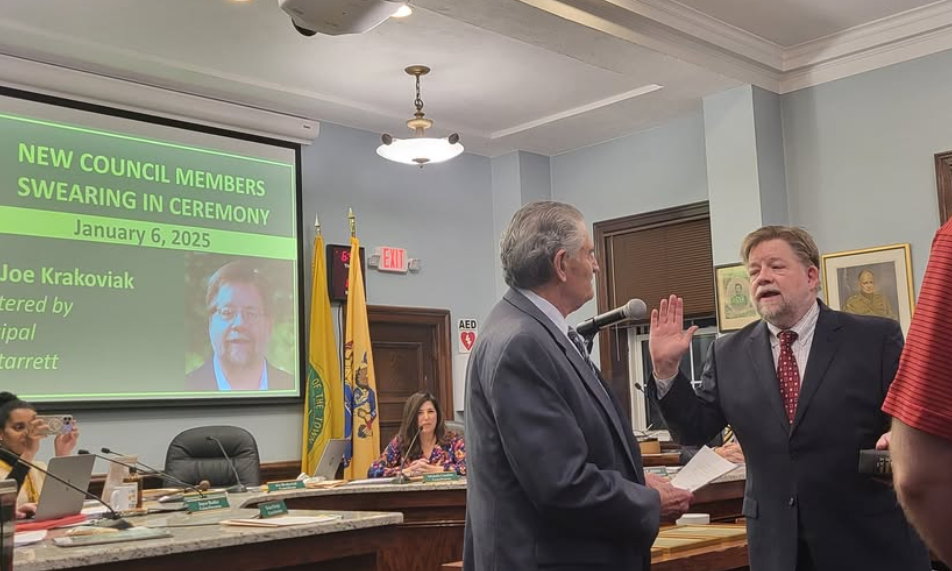Amid environmental concerns, billionaire family plans to build housing in NJ forest
March 17, 2025, 7 a.m.
The wealthy Wilf family has committed to include affordable housing to get the plan approved. But thousands of trees will be lost and locals worry it poses a flooding risk.

Twenty years ago, a prominent New Jersey real estate family’s plan to build 136 houses in the forest atop a mountain in West Orange, New Jersey was shot down by town officials who deemed it a public safety risk.
Now, the town has given an initial greenlight to the same family for a new proposal: to build a larger development of almost 500 apartments on the same land. It’s more than three-and-a-half times the number of homes that the town had previously rejected, and yet, it’s edging forward despite local residents’ worries about flooding and other environmental concerns.
The difference this time? New Jersey’s dire need for more affordable housing.
The Wilf family wants to build a sprawling, multibuilding complex with 100 apartments slated to be affordably priced for low and medium income residents. Their inclusion in the project would help West Orange make a big dent in its obligation to deliver hundreds of affordable units in state-mandated low-income housing construction over the next decade.
The patriarch and chair of the Wilf family’s real estate firm, Zygi Wilf, is well-known as the owner of the Minnesota Vikings. The billionaire family has also donated millions of dollars to charitable causes, including a recent $1 million donation to aid those affected by the Los Angeles wildfires.
Sandy Crisafulli, a spokesperson for Garden Homes, the Wilf’s real estate company, said neither Zygi Wilf nor a member of the development team was available for interview.
The Wilfs own the wooded, 120 acre tract of land – the largest undeveloped area in a densely populated part of the state – and their longtime vision for it underscores a bigger debate about affordability in New Jersey. On the one hand, state officials are pursuing a plan to construct 84,000 new affordable homes statewide by 2035. Every municipality is required to contribute their fair share, either through new construction or redevelopment.
But as town officials across the state are working to meet a June deadline to determine where they’re going to put new housing, some are asking at what cost, and whether the need for more homes should win out against environmental protections and the preservation of open space.

Essex County, where West Orange is located, is overwhelmingly left-leaning. Registered Democrats outnumber Republicans here 5 to 1, and Democrats generally favor affordable housing. But when it comes to the Wilfs’ proposal, local West Orange residents, some local officials, and New Jersey environmental experts argue that cutting down thousands of trees to make way for the development will not only increase flooding, but could also pose a risk for residents who would eventually occupy a mountaintop that the plan's opponents say is too isolated for hundreds of homes.
“The project as proposed has tremendous environmental dangers and uncertainties to the surrounding communities and residents,” said Joe Krakoviak, the president of West Orange's Township Council.
And yet, Krakoviak, who first joined the Council in 2010, voted to include the Wilfs’ project in West Orange’s 2020 affordable housing plan, not because he approves of the project, he said, but because he feared a costly lawsuit that could have led to even denser development in the forest.
”I knew that if I didn't approve it … that it was likely that the outcome would be even worse for the township,” he said.
Crisafulli, Garden Homes’ spokesperson, declined to answer questions about local environmental concerns and its discussions with the West Orange planning board, which will ultimately decide whether to give the plan the greenlight it needs to keep moving forward.
"This place floods now"
Rachel Klein and her family bought their four-bedroom home in West Orange in 2016 because it had more space for her growing family. She said she fell in love with the lush woodlands behind their new home after they moved in.
Her property line abuts a forest where some trees are well over 100 years old. It rises up a steep slope before the land flattens out at the top. The area is part of the second ridge of the Watchung Mountains, a volcanically formed peak of bedrock that’s millions of years old.
Klein hikes there with her purebred collie puppy, Islay. Now, the ridge line is dotted with trees that surveyors have tagged with the letter “D” in orange spray paint. It’s a marker for ”Building D,” where the developer plans to build one of four apartment buildings.
A forest patch in a developed area is just a jewel of a resource.
John Hasse, professor in Rowan University's Department of Geography, Planning & Sustainability
The prospect of losing the trees prompted Klein to take action. In 2023, while she was still pregnant with her fifth child, she teamed up with a neighbor to canvas the area, knocking on doors and talking to people about the Wilf family’s plans, though she insists she is not against affordable housing.
“ I'd oppose this if it was going to be one billionaire putting in a huge compound with the same idea of denuding the forest,” Klein said.
Her biggest worry, along with others in the community, is that removing thousands of trees and terrain that soak up stormwater and replacing it with concrete and buildings will increase flooding.an already problematic area.
“This place floods now with 85,000 trees on the site. You're going to split the forest in two. What's the impact of that going to be?,” said Joe Pannullo, who lives next to the forest and is president of We Care, a local grassroots organization.
Krakoviak, the council president, agrees, despite voting yes on the project. He said neighborhood residents have complained about flooding “for years and years,” and added that the town has struggled to get it under control.
“The township of West Orange has spent literally millions of dollars trying to better handle the stormwater runoff from the top of the mountain,” he said. “And that's where they want to put the project.”
A surprising decision
When the Wilf family submitted its proposal for the forest in the early 2000s, the town planning board voted it down over concerns about public safety. West Orange’s deputy fire chief testified that the site’s layout at the top of the mountain, with only one way in and one way out, was too dangerous and inefficient for residents and emergency responders, according to the planning board’s resolution at the time.
“In the event of a fire or flood or any kind of natural calamity, [it] might well trap the residents, might prevent emergency vehicles, fire trucks, ambulances from getting in,” said Paul Tractenberg, who’s lived in a condo next to the forest since 1998 and helped challenge the development.
The protracted debate stretched out over 11 hearings spanning more than a year. Tractenberg said at the time he was “surprised” by the board’s decisive conclusion.
”It was a vote of 5 to 2, which was not only a win for us, but a win with a little margin for error,” he said.
It is by far the biggest site in West Orange and one of the biggest in Essex County, and provides a significant amount of affordable housing for the region.
Josh Bauers, Fair Share Housing Center
Tractenberg said he and other members of the community then tried to preserve the land as protected open space, but that it was too difficult to find the millions of dollars in financing that would have been required.
“When 2008 and the financial crisis came and money dried up, that no longer at that time seemed a viable reality,” he said.
Nonetheless, by the time Klein moved into the neighborhood almost a decade later, local officials told her no one could build on the wooded slope behind her home, she recalled. What she didn’t know, she said, was that those promises didn’t extend to the top of the mountain.
The debate continues
By 2015, the forest was once again up for discussion. That’s when West Orange officials began negotiating with housing nonprofit Fair Share Housing Center on how much affordable housing the town would be required to build under what’s known in New Jersey as the Mount Laurel doctrine, a series of state Supreme Court rulings in the 1970s and ‘80s that created a mandate for each town to construct its fair share of low-priced homes.
Josh Bauers, a director at Fair Share Housing Center who was involved in those negotiations, said the forest development became a very important part of the town’s affordable housing plan.
“It is by far the biggest site in West Orange and one of the biggest in Essex County, and provides a significant amount of affordable housing for the region,” he said.
The wooded mountaintop has other favorable qualities, most notably that it’s within close commuting distance to New York City, said John Hasse, a professor in Rowan University's Department of Geography, Planning and Sustainability who is currently researching and rating all remaining developable land in New Jersey.
“And it doesn't have historic preservation, it's within a half-mile of recreational land use, that's a positive thing,” he added.
But Hasse also recognizes the environmental risks of building inside one the last large forested areas in a town of nearly 50,000 residents.
“A forest patch in a developed area is just a jewel of a resource,” he said.
Bauers said the site was “extensively analyzed” that development would be appropriate at the time it was being considered for West Orange’s housing plan.When it was finally included in the town’s settlement agreement in court, “nobody objected to it at that time,” he said.
“If there are legitimate environmental concerns, I think they, of course, should be taken into consideration and will need to be reviewed by the planning board,” Bauers said.
“Builder’s remedy”
As a township councilmember, Joe Krakoviak was also involved in negotiations with both Fair Share Housing Center and Garden Homes.
Krakoviak believes the Wilf family included affordable housing in its plans to push through a development it had long wanted to build. In addition to flooding and safety concerns, he worries that placing affordable housing on the top of the mountain will be a disservice to the people who move into the apartments that are built there.
“They may have a residence, but it's going to be far from the schools, from the food markets, from the post office, from the bus service,” Krakoviak said. “And the developer put them there to help them get approval for the rest of their project.”
Krakoviak said the only reason he signed off on the project was his fear of what could replace it if West Orange councilmembers rejected it.

In New Jersey, if town officials say no to a developer’s plans, that developer can ask a judge for what’s known as a “builder’s remedy.” It's essentially a court order that forces a town to allow the development of more affordable housing. And in a situation like that, the Township Council could have very little control over what gets built.
“That could give the builder even higher density in their project in order to provide this affordable housing portion of the development. So all the negotiations are going on with that in mind, that if we don't reach a settlement without a builder's remedy, we will get a builder's remedy and the outcome is likely to be even more detrimental to the township,” Krakoviak said.
Sandy Crisafulli, the Garden Homes spokesperson, declined to respond to questions about the 2020 affordable housing settlement.
The West Orange planning board will discuss the Wilfs’ proposal at its 10th hearing on March 19. Opponents expect there will be several more before a final decision is reached.
NJ towns ask judge to throw out builders' lawsuit over affordable housing NJ city has $350M plan to turn historic hospital into luxury housing. Locals are skeptical. NJ considers redistributing affordable housing requirements to other towns